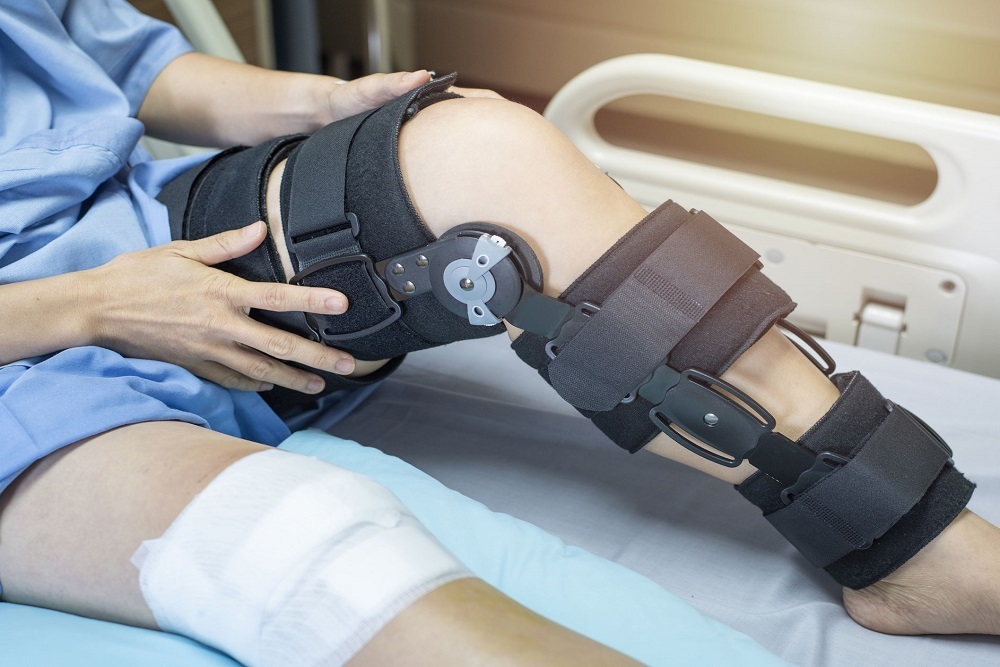
U.S. Food and Drug Administration issued the following announcement on Dec. 16.
The U.S. Food and Drug Administration granted marketing authorization—under the De Novo premarket review pathway—for an anterior cruciate ligament (ACL) implant, intended to serve as an alternative to ACL reconstruction to treat ACL tears. The device, the Bridge-Enhanced ACL Repair (BEAR) Implant, unlike traditional reconstruction, does not require the use of harvested tendons for ACL repair and is the only currently- available alternative to reconstruction with allograft, autograft or suture-only repair for the treatment of ACL rupture.
“Torn ACLs are among the most common knee injuries in the U.S., but for years, treatment has been limited to ACL reconstruction, which can be quite invasive and typically requires using tendon or a combination of tendon and bone from other parts of the body, or obtained from a tissue bank, to complete the reconstruction,” said Capt. Raquel Peat, Ph.D., MPH, USPHS, director of the Center for Devices and Radiological Health’s Office of Orthopedic Devices, “Today’s marketing authorization provides new options for the hundreds of thousands of people affected by ACL rupture in the U.S. each year.”
The ACL, a ligament stretching from the front to the back of the knee, aids in keeping the knee stable. Despite being a very common injury, until today, the only surgical treatment available for torn ACLs has been ACL reconstruction using allograft, autograft or suture-only repair.
The BEAR Implant is a resorbable implant—meaning it is absorbed by the body—made from bovine collagen and is secured via suture to bridge the gap between the torn ends of a patient’s ACL. The patient’s own blood is injected into the implant during the surgical implantation procedure with the intent of forming a device-protected clot that enables the body’s healing process. Within about eight weeks of the BEAR Implant surgical procedure, it is absorbed and replaced by the body’s own tissue.
The FDA assessed the safety and effectiveness of the BEAR Implant in a randomized controlled trial of 100 subjects with complete ACL rupture. In the study, 65 patients received the BEAR Implant and 35 members of the control group received ACL reconstruction with autograft (using their own tendon from another part of the body). Patients received physical therapy and were followed for two years. At the two-year mark, patients who received the BEAR Implant reported an average score of 88.6 and control subjects reported an average score of 84.6 using the International Knee Documentation Committee Subjective Score, a patient-reported outcome measure (questionnaire) that asks questions about symptoms related to pain and stiffness, sports activity and knee function. The patients also underwent arthrometry, a noninvasive measurement of laxity—or looseness—of the knee joint. Arthrometry measures the difference in laxity between a person’s healthy leg and their injured leg. In arthrometric assessments, measurements below 3 mm (the height of a stack of two pennies) are considered to be normal. At two years, subjects who received the BEAR implant had a laxity that, on average, was greater by 1.7 mm (about the same as the thickness of a penny) in the treated knee than that of the untreated knee. At two years, control subjects had a laxity that, on average, was greater by 1.8 mm in the treated knee than that of the untreated knee. Complications observed in the study consisted of graft or repair failure and the need for additional surgical procedures.
The FDA reviewed the BEAR Implant through the De Novo premarket review pathway, a regulatory pathway for low- to moderate-risk devices of a new type. Along with this authorization, the FDA is establishing special controls for devices of this type, including requirements related to labeling and performance testing. When met, the special controls, along with general controls, provide reasonable assurance of safety and effectiveness for devices of this type. This action creates a new regulatory classification, which means that subsequent devices of the same type with the same intended use may go through the FDA’s 510(k) premarket process, whereby devices can obtain marketing authorization by demonstrating substantial equivalence to a predicate device.
The BEAR Implant is indicated for skeletally‐mature patients at least 14 years of age with a complete rupture of the ACL, as confirmed by MRI. Patients must have an ACL stump attached to the tibia to construct the repair.
The FDA granted the marketing authorization to Miach Orthopaedics, Inc.
Original source can be found here.




